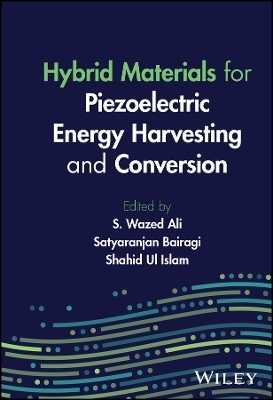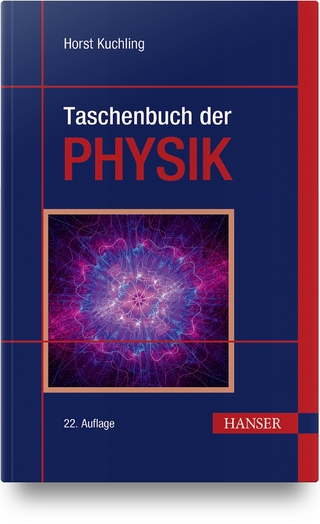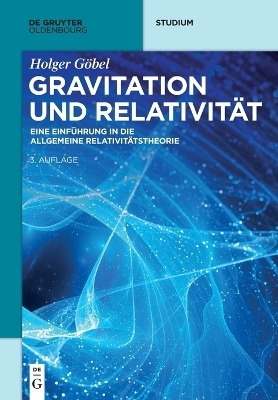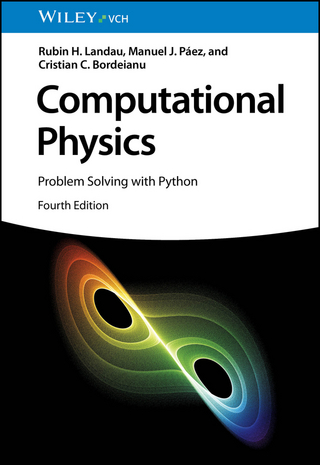
Hybrid Materials for Piezoelectric Energy Harvesting and Conversion
John Wiley & Sons Inc (Verlag)
978-1-394-15034-2 (ISBN)
- Titel ist leider vergriffen;
keine Neuauflage - Artikel merken
Piezoelectric energy harvesting is an increasingly widely-deployed technique to generate electricity from mechanical energy. Reliability, ease of use, and cleanliness make piezoelectric energy harvesting in small electronic devices a potentially valuable alternative to the practical challenges and waste production of disposable or even reusable batteries. However, piezoelectric materials have their own challenges, advantages, and limitations, and choosing between them is a difficult engineering problem in itself; hybrid piezoelectric materials, which can be used to compensate the weaknesses of individual piezoelectric materials (like ceramic or polymer), are the emerging solution.
Hybrid Materials for Piezoelectric Energy Harvesting and Conversion offers a systematic analysis of these hybrid piezoelectric materials and their applications. Each hybrid piezoelectric material is analyzed for its fundamentals, structural requirements, and applications, and the result is a significant contribution to materials science and electronic engineering.
Hybrid Materials for Piezoelectric Energy Harvesting and Conversion readers will also find:
Comprehensive coverage of piezoelectric materials to provide the best fit for any set of engineering needs
Detailed discussion of inorganic, organic, and hybrid piezoelectric materials
Surface modification of piezoelectric filler in composite based piezoelectric materials
Importance of semiconductive and conductive materials in enhancing piezoelectric response of hybrid piezoelectric materials
In depth analysis of bio-based hybrid piezoelectric materials
Hybrid Materials for Piezoelectric Energy Harvesting and Conversion is ideal for researchers in materials sciences, polymers, textiles, green and renewable energy, and all related fields.
S. Wazed Ali, PhD, is an Associate Professor in the Department of Textile and Fibre Engineering at Indian Institute of Technology (IIT) Delhi, India. He has previously worked as a research scientist at multiple firms, and has published widely on piezoelectric energy harvesting devices and related subjects. Satyaranjan Bairagi, PhD, is a Research Associate at the University of Glasgow, UK. He has published extensively on nanotechnology-based piezoelectric and triboelectric materials for nanogenerators and other related topics. Shahid Ul Islam, PhD, is an Assistant Professor in the Department of Applied Sciences and Humanities at Jamia Millia Islamia (A Central University), New Delhi, India. He has previously been a Fulbright Postdoctoral Fellow at the University of California, Davis, United States, and is a life member of the Asian Polymer Association.
List of Contributors ix
Preface xiii
1 Introduction to Hybrid Piezoelectric Materials 1
Sheer Khanyisile Dhlamini, Jonathan Tersur Orasugh, Suprakash Sinha Ray, and Dipankar Chattopadhyay
1.1 Introduction 1
1.2 The Concept of Piezoelectricity 4
1.3 Comparison between Piezoelectric Materials 8
1.4 Piezoelectric Material Types 10
1.5 Connectivity of Composites Similar in Hybrid Systems 22
1.6 Fabrication and Characterization of Hybrid Piezoelectric Materials 23
1.7 Piezoelectric Energy Harvesters (PEHs) System 28
1.8 Application of Hybrid Materials for Hybrid Energy-Harvesting Systems 32
1.9 Present Development Challenges and Future Perspectives 37
1.10 Conclusion 39
2 KNN-Based Hybrid Piezoelectric Materials 51
S. Wazed Ali, Swagata Banerjee, Chirantan Shee, and Mayuri Srivastava
2.1 Introduction 51
2.2 Lead-Free Ceramics 53
2.3 Potassium Sodium Niobate (KNN): A Piezoelectric Material 58
2.4 Potassium Sodium Niobate (KNN)-Based Hybrid Piezoelectric Materials 61
2.5 Applications 67
2.6 Conclusion 68
3 MoS2-Based Hybrid Piezoelectric Materials 77
Sahal Ebrahim and Deepalekshmi Ponnamma
3.1 Introduction 77
3.2 Different Methods of MoS2 Synthesis 81
3.3 MoS2 Working Mechanism 83
3.4 Investigating the Transition of MoS2 Structure from Bulk to Nanostructured Materials 85
3.5 Piezoelectric Energy Harvesting by MoS2 Composites 86
3.6 Conclusions 98
4 BaTiO3-Based Hybrid Piezoelectric Materials 103
Chirantan Shee, Swagata Banerjee, S. Wazed Ali, and Ramasamy Alagirusamy
4.1 Introduction 103
4.2 Structure and Piezoelectric Properties of BaTiO3 Perovskite 106
4.3 Synthesis of Barium Titanate 108
4.4 Barium Titanate-Based Hybrid Piezoelectric Materials 110
4.5 Applications 119
4.6 Conclusion 122
5 BNT-Based Hybrid Piezoelectric Materials 129
Abhishek Sasmal, Shrabanee Sen, and Arunachalakasi Arockiarajan
5.1 Introduction 129
5.2 Key Limitations of BNT andWays to Overcome the Limitations 130
5.3 Applicability of BNT-Based Materials for Piezoelectric Energy Harvesting 131
5.4 BNT/Piezoelectric Polymer-Based Piezoelectric Energy Harvesters 133
5.5 BNT/Non-Piezoelectric Polymer-Based Piezoelectric Energy Harvesters 135
5.6 BNT-Based Other Mechanical Energy Harvesters 139
5.7 Challenges and Future Scopes 139
5.8 Conclusion 140
6 ZnSnO3-Based Hybrid Piezoelectric Materials 145
Anupam Chowdhury, Srijan Das, Mukta Nitin Mirlekar, and S. Wazed Ali
6.1 Introduction 145
6.2 Synthesis of Zinc Stannate 146
6.3 Morphologies and Properties of Zinc Stannate 150
6.4 Uses of Zinc Stannate and Hybrids in Piezoelectric Nanogenerators 150
6.5 Conclusion 154
7 ZnFe2O4-Based Hybrid Piezoelectric Materials 159
Ipsita Chinya and Shrabanee Sen
7.1 Introduction 159
7.2 Current Scenario, Challenges in This Field and Scope of the Chapter 161
7.3 Fabrication Strategy of the Nanocomposites 162
7.4 The Controlling Factors of β-phase Formation in Composites and its Property 164
7.5 ZF Nanorod (High Aspect Ratio) and Copolymer PVDF-HFP-Based Nanocomposite 185
7.6 Applications Still Explored and Future Scope 186
7.7 Conclusion 190
7.8 Future Direction 190
8 Conductive Filler-Based Hybrid Piezoelectric Materials 203
Ankur Shukla and Priyanka Gupta
8.1 Introduction 203
8.2 Piezoelectricity: A Brief Overview 205
8.3 Role of Conductive Fillers in Piezoelectric Materials 206
8.4 Conductive Filler-Based Piezoelectric Materials 208
8.5 Applications 216
8.6 Summary 225
8.7 Challenges 226
9 Semiconductive Filler-Based Hybrid Piezoelectric Materials 241
Swagata Banerjee, Aiswarya Baburaj, Akshaya Aliyana, Satyaranjan Bairagi, and Naveen Kumar Sindhughatta Kalaiah
9.1 Introduction 241
9.2 Piezoelectric Materials 242
9.3 Semiconductor-Modified Hybrid Piezoelectric Materials 243
9.4 Semiconductive Filler-Based Hybrid Piezoelectric Energy Harvesters 248
9.5 Applications 254
9.6 Conclusion 257
10 Cellulose-Based Hybrid Piezoelectric Materials 265
Srijan Das, Mukta Nitin Mirlekar, Sourav Banerjee, Anupam Chowdhury, and S. Wazed Ali
10.1 Introduction 265
10.2 Origin of Piezoelectricity in Cellulose 267
10.3 Different Crystal Structures and Forms of Cellulose 268
10.4 Cellulose-Based Hybrid Piezoelectric Devices Containing Cellulose as Matrix 270
10.5 Cellulose-Based Hybrid Piezoelectric Devices Containing Cellulose as Filler 273
10.6 Conclusion 277
11 Collagen-Based Hybrid Piezoelectric Material 283
Adrija Ghosh, Suprakas Sinha Ray, Jonathan Tersur Orasugh, and Dipankar Chattopadhyay
11.1 Introduction 283
11.2 Origin of Piezoelectricity in Collagen 285
11.3 Application of Collagen-based Hybrid Piezoelectric Systems 288
11.4 Collagen-Based Piezoelectric Nanogenerator 288
11.5 Collagen-based Supercapacitors 289
11.6 Collagen-based Sensors 291
11.7 Collagen-based Memory Devices 292
11.8 Collagen-based Tissue Engineering Scaffolds 294
11.9 Conclusion and Future Prospects 295
12 Chitin and Chitosan--Foremost Hybrid Piezoelectric Materials for Energy Harvesting Applications 301
Sourav Banerjee, S. Wazed Ali, and Satya Narayan Naik
12.1 Introduction 301
12.2 Chitin and its Application as Piezoelectric Material 303
12.3 Chitosan and its Applications as Piezoelectric Materials 306
12.4 Problems 312
12.5 Future Scope 313
References 313
Index 321
| Erscheinungsdatum | 24.04.2024 |
|---|---|
| Verlagsort | New York |
| Sprache | englisch |
| Gewicht | 851 g |
| Themenwelt | Naturwissenschaften ► Physik / Astronomie |
| Technik ► Maschinenbau | |
| ISBN-10 | 1-394-15034-2 / 1394150342 |
| ISBN-13 | 978-1-394-15034-2 / 9781394150342 |
| Zustand | Neuware |
| Informationen gemäß Produktsicherheitsverordnung (GPSR) | |
| Haben Sie eine Frage zum Produkt? |
aus dem Bereich


